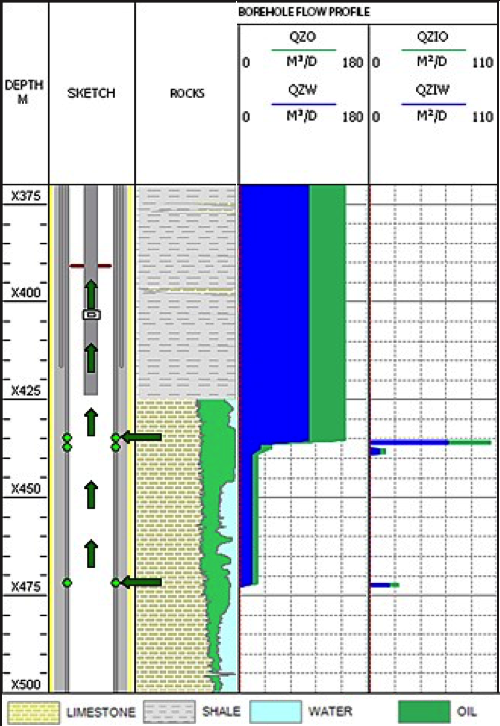Collective term for Cased-Hole Logging operations in producing wells with a purpose to assess Borehole Flow Profile (BFP) and/or Reservoir Flow Profiling (RFP):
| Borehole Flow Profile (BFP) | Reservoir Flow Profiling (RFP) | ||
| Borehole Production Profile | Borehole Injection Profile | Reservoir Production Profile | Reservoir Injection Profile |
PLT is essential part of the production and recovery monitoring and helps understand fluid communication at Well-Reservoir Contact.
For PLT in injection well see ILT, although it is often called PLT anyway.
The survey is performed with a multi-sensor downhole PLT Logging Tool and interpreted with PLT-BFP Model or PLT-RFP Model.
Objectives
Picking up the fluid inflow intervals and phase characterization |
| Estimating flowrate of each phase component across each inflow interval |
| Check up for cross-flows in shut-in conditions between formation units with different formation pressure |
Picking up the zones of the first barrier (tubing and/or casing) integrity failure |
| Conclusions | |
Both perforations are producing oil and water with upper interval producing more than lower. The lower inflow zone is mostly producing water. | |
Fig.1. PLT in oil producer with oil and water production. See ILT for example in injecting well. |
See Also
Petroleum Industry / Upstream / Data Acquisition / Well & Reservoir Surveillance / Well logging / Cased-Hole Logging
[ Well & Log Analysis ][ Borehole Flow Profile (BFP) ][ Reservoir Flow Profiling (RFP) ][ Temperature Logging ][ Noise Logging ]
[ PLT – Donwnhole Tools ] [ PLT – Logging Procedure ] [ PLT – Interpretation ] [ PLT – Samples ]
References
Richard Bateman, Cased Hole Log Analysis and Reservoir Performance Monitoring, 2015
